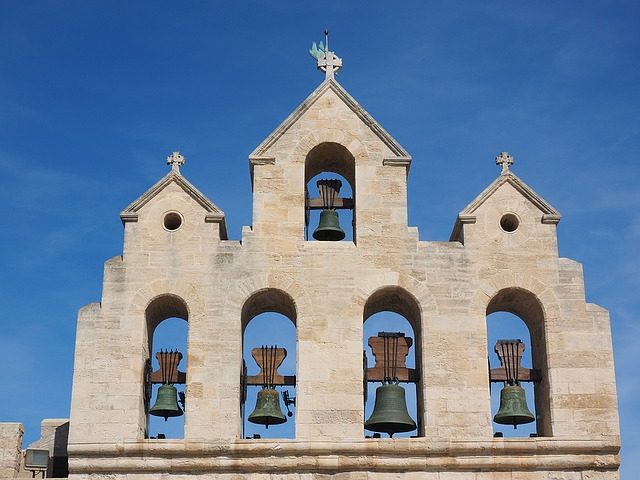Introduction of Bells :
The introduction of Bells in churches took place in the early middle ages reflecting the influence of Irish missionaries. The tradition of ringing church bells dates back to AD 400 when Paulinus of Nola first introduced bells in association with a church.
In olden days, bells were used to warn villagers of impending danger like tidal waves, hurricanes etc. or enemy attacks.
Bells can be found on entrance doors, in schools, as wind chimes, in big clocks, in Churches and most of all in Temples. Be they Buddhist or Hindu. Bells form an integral part of worship and spread joy with their tingling sound. Even Christian wedding cards do have bells printed on them symbolising the tradition of ‘ringing changes’ as the wedded couple leave the church.
As a little girl, most of my holidays were spent at our ancestral home in Goa. Chapels of different sizes surrounded us. The church was not too far away either. In fact so close was its proximity that the wind carried its many bell signals to us. The different types of rings evoked different feelings.
Sometimes it would be a low sombre ‘dong’, ‘dong-dong’. Sometimes a ‘ding-ding’, or a ‘ding-dong’.
What did these different rhythmic beats signify?
Each Bell produces different sounds. They are made that way. High pitched sounds are produced by a ‘treble’ (the lightest and highest-sounding bell), then the “2”, the “3”, and so forth down to the heaviest and deepest-sounding bell, the ‘tenor’.
When the church bell is rung with low sombre tones it informs the villagers that someone has passed away. Also known as the ‘death knell’. This is a slow ringing of the bell, usually once for each year of the deceased’s age. Seven times slowly if the deceased was 70 and if he was 75 then another 5 times after a gap. Some countries also had three strokes for men and two for women. However, this practice is discontinued now.
A normal ‘pealing’ or ‘ding-dong’ sound, once in each direction, at the rate of one ring per second signifies a call to prayer.
Vigorous chiming of ‘ding-dong’, ‘ding-dong’, several times, completes a joyous ceremony. Either a church wedding or a baptism etc.
Bells also form an integral part of Hindu worship. Temple bells are rung all at once, in a continuous manner as a form of praise.
Historical Bells of Goa
Each church bell in Goa has a history behind it. Each sound is different. When the bell sounds, it stirs up a mysterious feeling of awe among the uninitiated. For me, it was a feeling of home-coming, a sense of belonging.

The Our Lady of the Immaculate Conception Church located in Panjim houses the second largest church bell in Goa.

The Se Cathedral’s tower houses the “Golden Bell” (so called for its rich tone) said to be the largest in Goa, and one of the best in the world. This Golden bell could be heard all over Goa, (according to legend).

The Mahalsa Temple at Mardol, Goa, is also famous for its huge brass bell. During the Portuguese era, criminals were made to ring the bell. Legend had it that they would be severely punished within 3 days by the deity if they lied.
Today, the sound of pealing, tolling or chiming of Bells is dearly missed as the sounds cannot be heard over the winds due to noise pollution, except on a quiet summer afternoon or a still winter day.
Picture credits:Trip Advisor, You Tube, Virtual Tourist


